Clinical Case Reports and Clinical Study
OPEN ACCESS | Volume 12 - Issue 5 - 2025
ISSN No: 2766-8614 | Journal DOI: 10.61148/2766-8614/JCCRCS
Abdullah Kaplan, MD1,2*
1Department of Cardiology, Kemer Public Hospital, Yeni Mahalle, Dedeler Mevkii, No 31, Kemer, Antalya, Turkey
2Department of Pharmacology and Toxicology, American University of Beirut Faculty of Medicine, Riad El-Solh, Beirut 1107 2020, Lebanon
*Corresponding Author: Abdullah Kaplan, Department of Cardiology, Kemer Public Hospital, Yeni Mahalle, Dedeler Mevkii, No 31, Kemer, Antalya, Turkey.
Received: July 24, 2022
Accepted: August 04, 2022
Published: August 09, 2022
Citation: Abdullah Kaplan (2022) “Concomitant Use of Doxazosin and Amlodipine Cause Penile Edema in an Older Patient”, Clinical Case Reports and Clinical Study, 4(7); DOI: http;//doi.org/08.2022/1.147.
Copyright: © 2022 Abdullah Kaplan. This is an open access article distributed under the Creative Commons Attribution License, which permits unrestricted use, distribution, and reproduction in any medium, provided the original work is properly Cited.
,
Introduction
Calcium channel blockers (CCBs) commonly used first-line agents for hypertension management (1, 2). Owing to their favorable adverse effect profile, CCBs are favorably prescribed medication, especially in elder patients (1). Peripheral edema is a common side effect of dihydropyridine CCB and may result in dose reduction or drug discontinuation (3). Amlodipine is a third generation dihydropyridine CCB prescribed as monotherapy or in combination for treating hypertension and angina pectoris (3, 4, 5). Amlodipine is more prone to cause peripheral edema than non-dihydropyridine CCBs and newer lipophilic dihydropyridine CCBs (1, 6).
Doxazosin is a long-acting α1-blocker and a highly effective add-on therapeutic agent. In various guidelines, doxazosin is not indicated as first-line antihypertensive medication (7). The European guidelines recommend the use of doxazosin for the treatment of resistant hypertension when spironolactone is contraindicated or not tolerated (8, 9). Peripheral edema can also be experienced by patients taking doxazosin (7, 10).
In this case, development of penile edema in elderly after concomitant use of amlodipine and doxazosin is presented. Although a combination of CCB and doxazosin have been used in clinical practice and in numerous clinical studies, there is no report in the English literature mentioning penile edema as a side effect of this combination.
Case
An 85-year-old man visited the cardiology outpatient clinic having experienced swelling in penis and both lower extremities over the last seven days. On physical examination, alongside a grade 2-3 pitting edema on both lower extremities, a penile edema with mildly involvement of scrotum was noted. No abdominal and jugular venous distention were observed. He reported that his symptoms existed within two days after a new drug (amlodipine) was added to his treatment. He had a history of cor-pulmonale secondary to chronic obstructive pulmonary disease for more than five years and chronic kidney disease and benign prostate hyperplasia for more than ten years. He had a diagnosis of atrial fibrillation a few years ago. He stated that he had experienced swelling of the lower extremities several times but never in his penis. The echocardiography revealed a dilatation in both atriums, moderate tricuspid regurgitation and pulmonary artery pressure, mild mitral regurgitation, mild left ventricular hypertrophy, and normal left and right ventricular systolic function. Estimated glomerular filtration rate was 30%. He had been taking formoterol fumarat/beklometazon dipropiyonat, metoprolol 50 mg, doxazosin 4 mg, furosemide 40 mg, rivaroxaban 15 mg, and ramipril 5 mg daily. On his last visit, amlodipine 10 mg had been started to regulate the blood pressure.
The patient was admitted to the inpatient clinic. Furosemide 40 mg tablet was replaced with the parenteral administration of 20 mg twice a day. Doxazosin was replaced with dutasteride, and amlodipine dosage decreased to 5 mg. After 2 days of admission, the swelling in his penis and lower extremities subsided. To regulate the blood pressure the dose of amlodipine increased to 10 mg on discharge. The patient was seen two weeks and six weeks later in an outpatient clinic and no swelling in penis and lower extremities were reported.
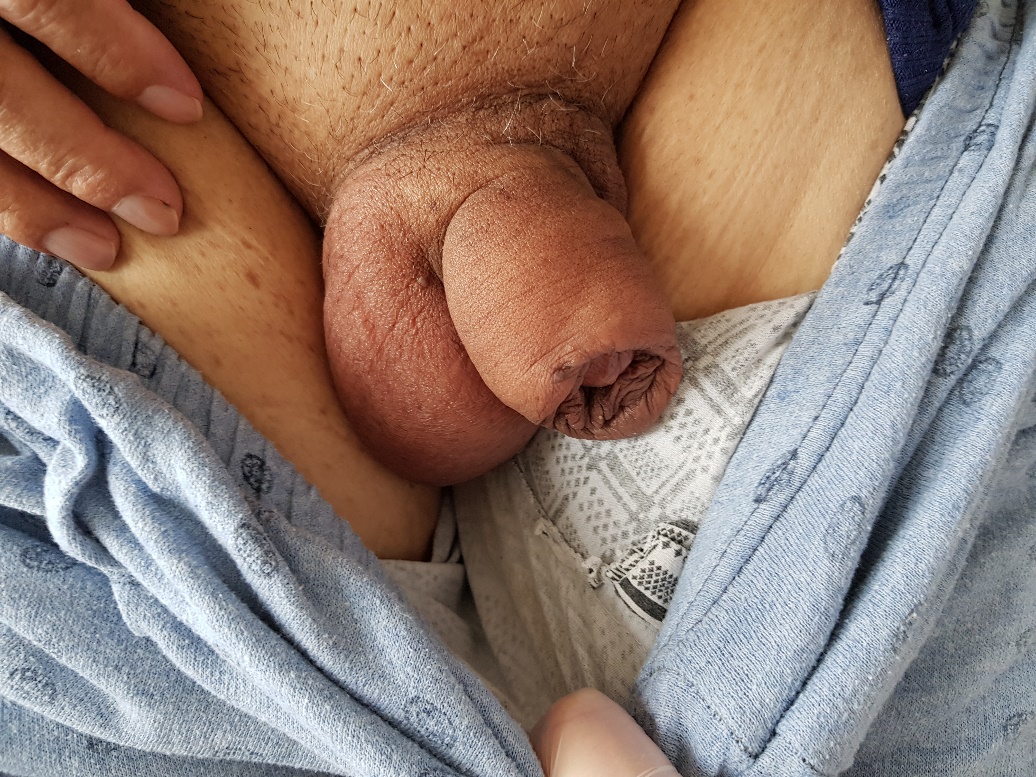
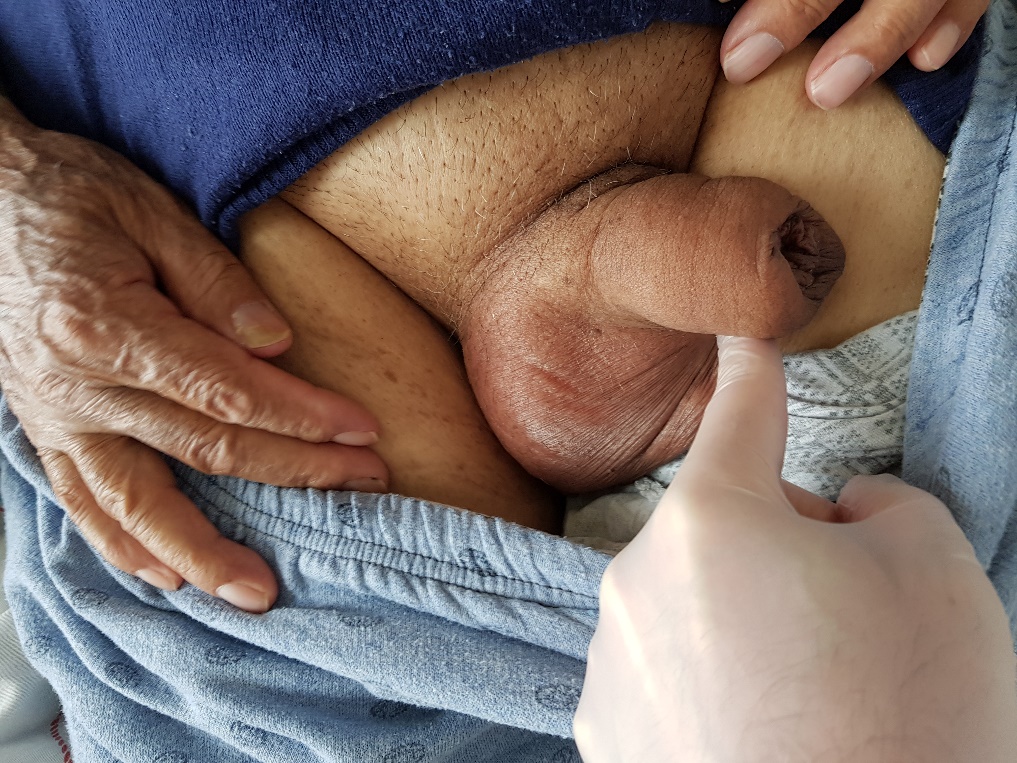

Figure 1: demonstrates the edema in penis from different view with mildly scrotal involvement.
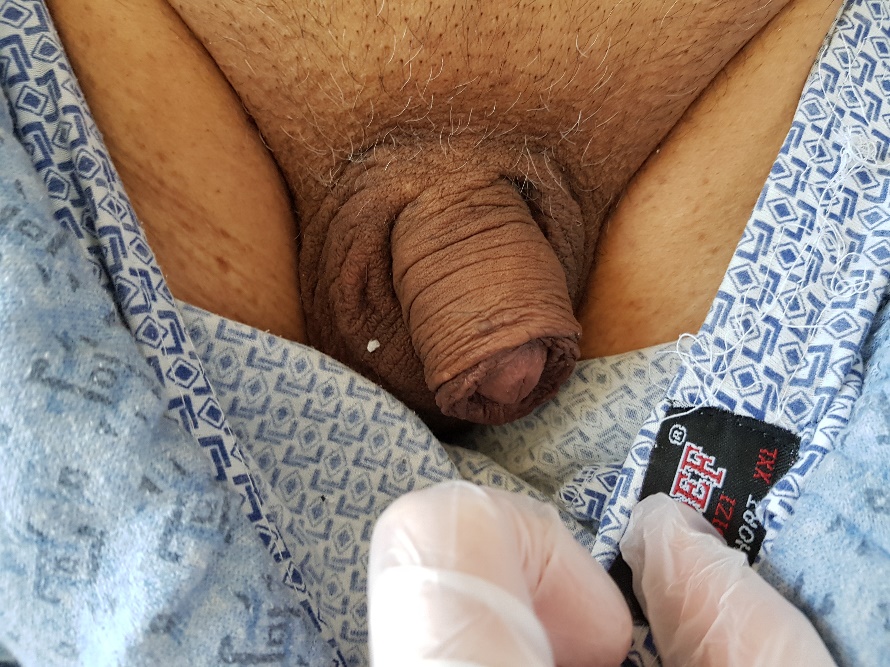
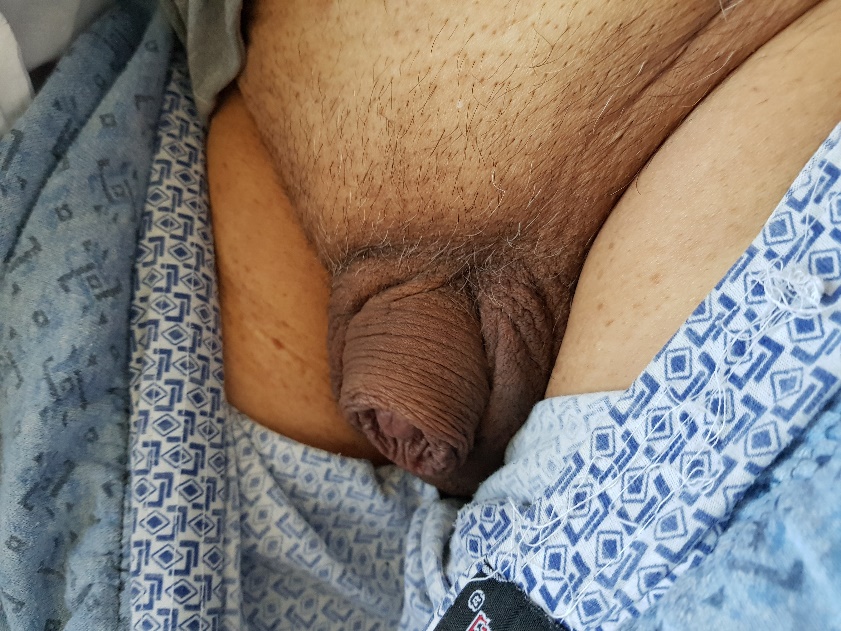
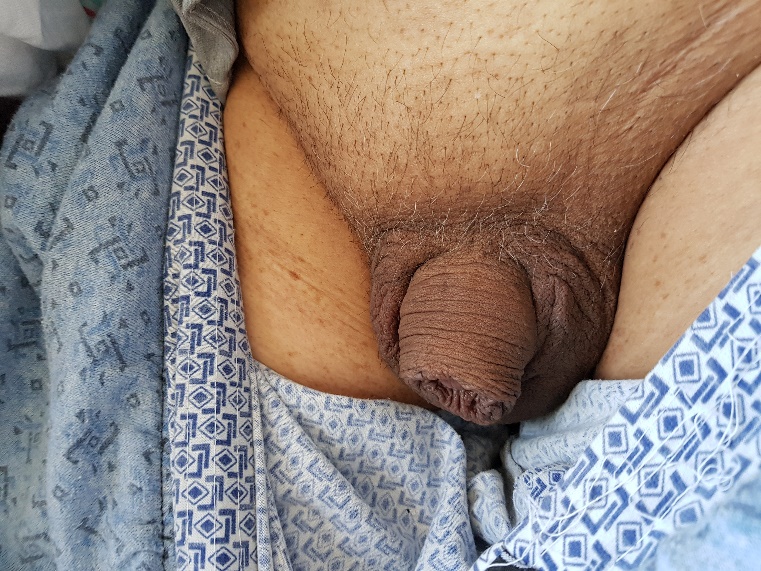
Figure 2: demonstrates normal penile circumference in the patient after subsiding of edema.
Discussion
Peripheral edema is a common adverse effect of dihydropyridine CCB and its incidence ranges from 5 to 70 % (3). The grade of peripheral edema depends on the CCB type, dosage, and duration of therapy (1). The underlying mechanism of CCB-induced edema is assumed to be associated to preferential dilation of pre-capillary vessels, thus weakening venoarterial reflex, leading to an augmented intracapillary pressure gradient and/or capillary permeability (3, 11, 12). Patients who receive ACE-I or ARB in combination with amlodipine suffer less edema when compared to those treated with CCB therapy alone (3, 12). Amlodipine, the most prescribed CCB, effectively reduces stroke and myocardial infarction rate (12, 13, 14). However, peripheral edema is a significant adverse effect of treatment with amlodipine, which is almost three-fold high compared with placebo (12).
Doxazosin is a highly effective add-on therapeutic agent with favorable metabolic effects (7). Since the results of the Antihypertensive and Lipid-Lowering treatment to prevent Heart Attack Trial (ALLHAT) raised some concerns about adverse effects of doxazosin, it is added as a second- or third-line agent to hypertension management (7, 10, 15). Of importance, there are some important critics to study design of the ALLHAT; therefore, the result of the study should be read with caution. (10, 15). Despite the ALLHAT study results, doxazosin remains an important, effective, and apparently safe adjunct therapy in the complex hypertensive patients, especially in male with benign prostatic hyperplasia (16). Peripheral edema with doxazosin reported around 8% (10).
There is no statistic about incidence of peripheral edema in concomitant treatment of doxazosin and amlodipine. Furthermore, there is not any case report in the English literature regarding penile edema either with individual use of doxazosin and amlodipine or their concomitant use. In the clinical practice we notice an increment in the incidence of peripheral edema while adding doxazosin to existing amlodipine treatment and vice versa. However, penile edema as a side effect of this combination for the first time has been observed in our practice. Since penile edema occurred after addition of amlodipine to doxazosin and subsided after discontinuation of doxazosin, this adverse event was attributed to concomitant use of these two medications. Moreover, individual use of the doxazosin and amlodipine in the same patient did not cause penile edema. Unlike right sided heart failure, abdominal distention, and scrotal edema without involvement of penis were not observed in the patient. There were no clinical findings of an acute pathology such as COPD exacerbation, acute renal failure, pulmonary emboli, and myocardial infarction that worsened the right heart failure clinic in the patient.
In conclusion, to the best of our knowledge this is the first reported case of penile edema due to the concomitant use of doxazosin and amlodipine in the English literature. This unreported side effect may perplex physicians and distress patients. Awareness of this rare and reversible adverse event may help physicians when they assure their patient of penile edema. Additionally, there is a lack of data in the literature regarding peripheral edema incidence in the concomitant use of doxazosin and amlodipine. A large-scale study is required to reveal the incidence of peripheral and penile edema in patients taking a combination of these drugs.